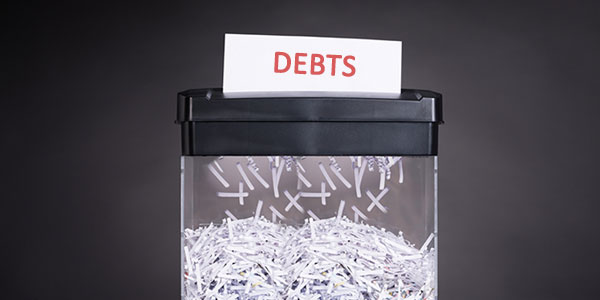Have you finally decided to pay off your debts and make a fresh financial start? Well, in that case, take these 2 steps right now.
Step 1 Calculate how much you owe
Look at your credit card statements and other bills. Calculate your total outstanding balance. Note it down on a blank sheet of paper.
Step 2 List all your creditors
Pull a copy of your credit report from the annualcreditreport.com. You’ll get the list of your creditors from there.
After you have taken these steps, your next step is to settle your debts one by one. Sounds too simple and easy. Isn’t it?
Wrong!
There are many other factors you need to consider. For instance, what if you owe a gigantic amount? What if you owe $100,000 to your creditors? What about the debts and assets you’re not aware of?
Worried? You should be. But don’t lose your sleep.
There is a way out of this problem. You can file bankruptcy to get out of this massive debt. But as per the bankruptcy law, you should list all your debts and assets accurately in your bankruptcy petition. If you don’t list your debts properly, then the bankruptcy court can dismiss your case right aw. They can even deny your entire discharge permanently.
As per the uscourt.gov,
“In order to complete the Official Bankruptcy Forms that make up the petition, statement of financial affairs, and schedules, the debtor must provide the following information:
- A list of all creditors and the amount and nature of their claims;
- The source, amount, and frequency of the debtor's income;
- A list of all of the debtor's property; and
- A detailed list of the debtor's monthly living expenses, i.e., food, clothing, shelter, utilities, taxes, transportation, medicine, etc."
How to discharge debts you don’t know in bankruptcy
What will you do about the debts you aren’t aware of? Suppose, you had undergone a medical surgery recently. You haven’t received the medical bills yet. So you don’t know the exact figure. What will you do?
There’s yet another scenario to consider. Suppose you have old debts. You have forgotten all the details. You haven’t checked your mail for many years. You have no idea whom you owe. You can’t recollect anything. What will you do?
Do you have to wait and file bankruptcy later till you get all your bills?
Not necessarily. It’s true that you can’t file a Chapter 11 or 13 bankruptcy. But you can opt for Chapter 7 no asset case to discharge your debts.
What does Chapter 7 no asset case mean?
In Chapter 7 no asset case, the US trustee doesn’t liquidate assets to distribute the sale proceeds amongst your creditors. This is called ‘no asset’ case. Since your assets aren’t liquidated, so the failure to include a debt or a creditor in the petition doesn’t have any impact on the dischargeability of the debt. Your debts are discharged regardless of whether or not you list your assets and liabilities in bankruptcy. The main subject of concern is, the debt existed when you filed bankruptcy.
In simple words, if you’re not aware of the debts you owe, file Chapter 7 no asset case. It is the best way to pay off the debts you aren’t aware of.
Why are you allowed to discharge unidentified debts?
Unlike a normal Chapter 7 bankruptcy or straight bankruptcy, your assets are not liquidated in Chapter 7 no asset case. If no distribution is being made to the creditors, then the fact they didn’t get any notice is not a harmful situation. There is no need to file a claim.
Can the creditors object in Chapter 7 no asset case?
Yes, creditors can object if there is a fraudulent activity. Creditors can reopen your bankruptcy case since they didn’t get any notice. Hence they didn’t get any time to object within the deadline.
Role of the trustee in Chapter 7 individual or joint debtor no asset case
The bankruptcy trustee has a big role to play in Chapter 7 individual or joint debtor no asset case. If you have exempt assets or they are subject to valid liens, then the trustee will file a ‘no asset’ report with the court. Since you don’t have non-exempt assets, there will be no distribution to the unsecured creditors. Creditors don’t need to file proofs of claim. However, if the trustee discovers assets for distribution to unsecured creditors, then you’re in a big trouble. The court will notify the creditors and give them extra time for filing proofs of claim.
Conclusion
File Chapter 7 no asset case only when you’re eligible to do so and don’t possess non-exempt assets that can be liquidated. Have a talk with your attorney and find out if you’re eligible for a Chapter 7 no asset case. Bankruptcy laws are too complex. Your attorney knows which Chapter is the best for your financial situation. He can tell you if you should go for the straight bankruptcy or a reorganization plan. Don’t forget to inform that you have unidentified debts since your attorney needs to do a risk assessment before submitting the bankruptcy petition.













